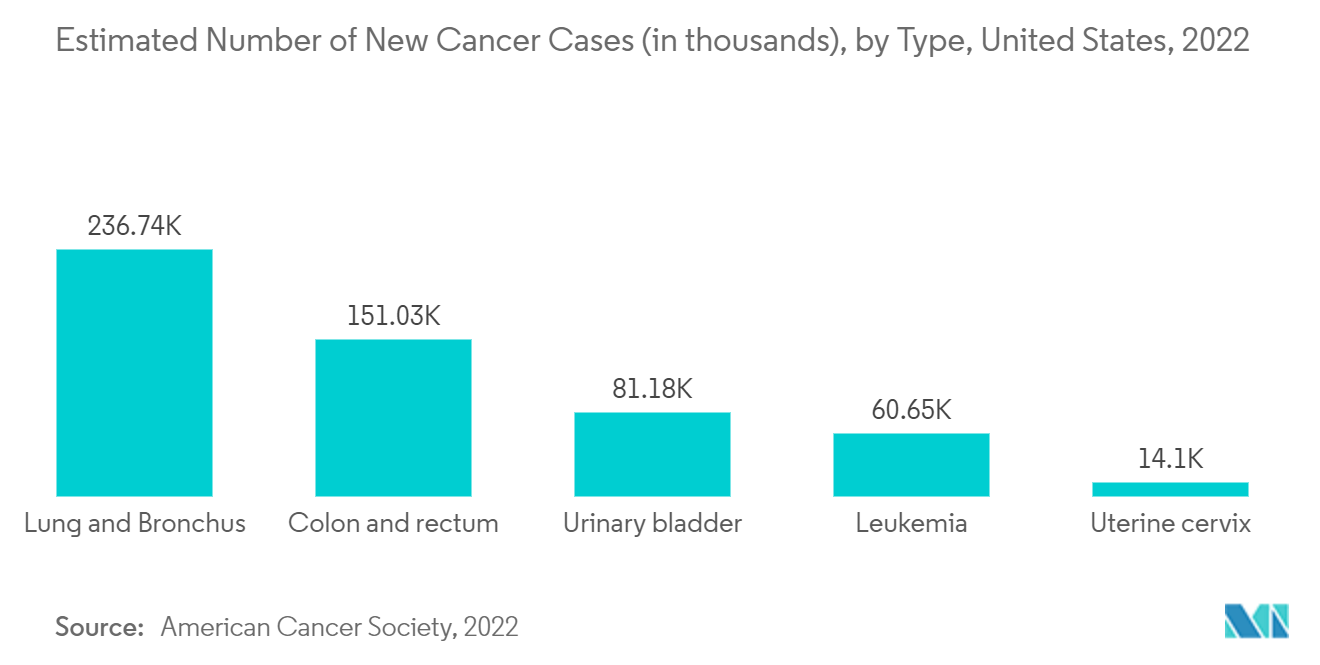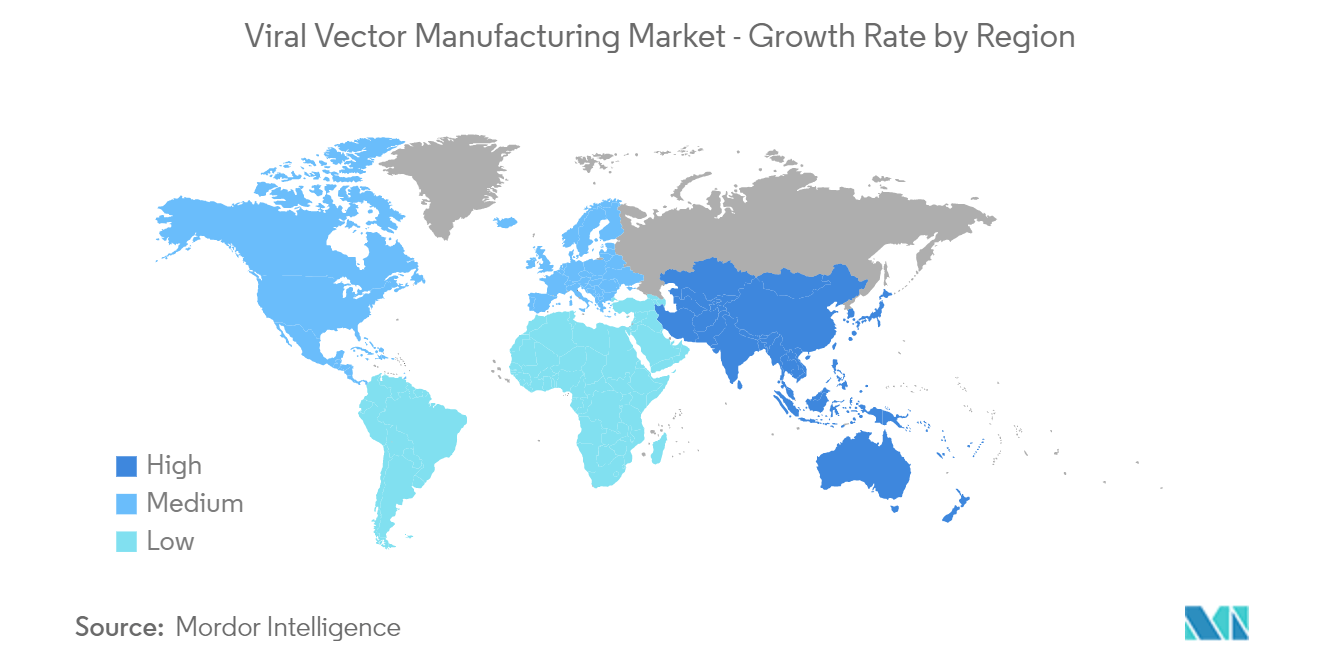Market Trends of Global Viral Vector Manufacturing Industry
This section covers the major market trends shaping the Viral Vector Manufacturing Market according to our research experts:
Cancer Sub-segment is Expected to Grow Faster in the Disease Segment
The upsurge in the global incidence of cancer and modern healthcare facilities are acting as major drivers for the growth of the market studied. According to GLOBOCAN 2020, globally, there were 1,92,92,789 new cancer cases in 2020, and it is projected to increase to 2,88,87,940 cases by 2040. In 2022, there are numerous Phase I, Phase II, Phase III, and Phase IV clinical trials related to viral vectors for the treatment of various types of cancers such as brain, skin, liver, colon, breast, and kidney. These trials are being conducted in various academic centers and biotechnology companies. For instance, as of November 17, 2022, more than 663 ongoing interventional clinical trials related to gene therapy across different phases of development for cancer were there globally, as mentioned in the National Clinical Trial (NCT) Registry.
In the field of oncology, viral vector-based gene therapy has demonstrated steady progress. A variety of viral vectors have been engineered for both therapeutic and preventive applications in cancers. Many gene therapy strategies have been developed to treat a wide range of cancers, including suicide gene therapy, oncolytic virotherapy, anti-angiogenesis, and therapeutic gene vaccines. According to the study published in the Radiology and Oncology in March 2022, numerous opportunities exist for using viral vectors in cancer therapy. Due to their improved ability to transduce human cells, viral vectors are a desirable drug delivery option. Over a thousand clinical trials using viral vectors are being conducted worldwide to treat cancer in 2021. For instance, as per clinicaltrial.gov as of November 17, 2022, there are around 86 trials being active using viral vectors for the treatment of cancer. Thus, owing to the increase in global cancer incidence, the market is expected to see growth.
The increasing research and development activities for the development of viral vector vaccines or therapies are increasing the opportunity for novel product developments. For instance, in September 2021, building on the success of the Oxford-AstraZeneca vaccine against SARS-CoV-2, researchers from the University of Oxford and the Ludwig Institute for Cancer Research are creating a vaccine to treat cancer. a viral vector cancer vaccine reduces tumor size and improves survival rates in mouse models by generating efficient anti-tumor immune responses when combined with immunotherapy. it is expected that a first-in-human clinical trial of the therapeutic cancer vaccine will begin in patients with non-small cell lung cancer in the coming year. Thus, growing research and development activity on the viral vector bases cancer manufacturing vaccines
The surge in demand for the development of effective therapeutics for cancer management, the presence of a prompt approval process, and the prospects of novel drugs for significant product developments are the primary reasons responsible for significant research and development investments in the field of cancer therapeutics that are based on viral vectors. This, in turn, affects the growth of the cancer segment positively, and the cancer segment is hence expected to boost the market's growth.

North America is Expected to Witness Considerable Growth Over the Forecast Period
North America currently dominates the market for viral vector manufacturing and is expected to continue its stronghold for a few more years. In the United States, regulatory encouragement and patient advocacy have pushed rare disease clinical research to center stage. The significant incentives on offer through the Orphan Drugs Act (the United States) have encouraged pharmaceutical and biotechnology companies to consider the development of rare disease medicines as a potentially profitable venture.
Many companies have been expanding their facilities and investing a significant amount of capital in the region. For example, in October 2022, Kite, a Gilead Company announced the U.S. FDA has approved the company's retroviral vector (RVV) manufacturing facility in Oceanside, California, for commercial production of viral vetors. These developments could have a positive effect on the market growth as more research on viral vectors is anticipated. In October 2021, Catalent has invested USD 230 million to increase the production of viral vectors at its gene therapy campus in Harmans, Maryland.
The United States holds the largest market share in the North American region owing to various factors like the high adoption rate of new therapies, increasing investments by key players, and the high incidence rate of cancer. For instance, in January 2021, Fujifilm Corporation is planning to invest USD 40.0 million to establish a new processing facility to advance viral vector manufacturing and perform cutting-edge research in the field of advanced therapies in the greater-Boston area. The investment will be dedicated to Fujifilm Diosynth Biotechnologies, a contract development and manufacturing organization (CDMO) for biologics, viral vaccines, and viral vectors. Thus such favorable initiatives may surge the market growth in the United States over the forecast period.

